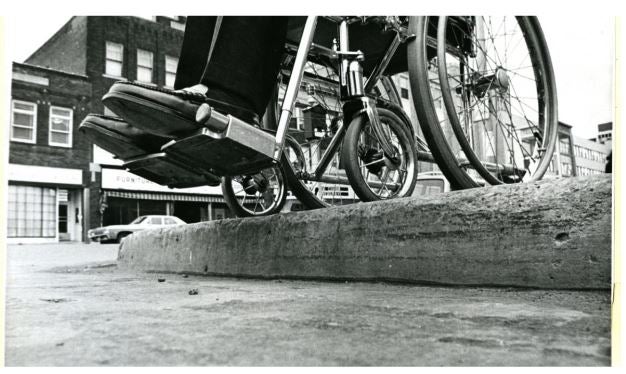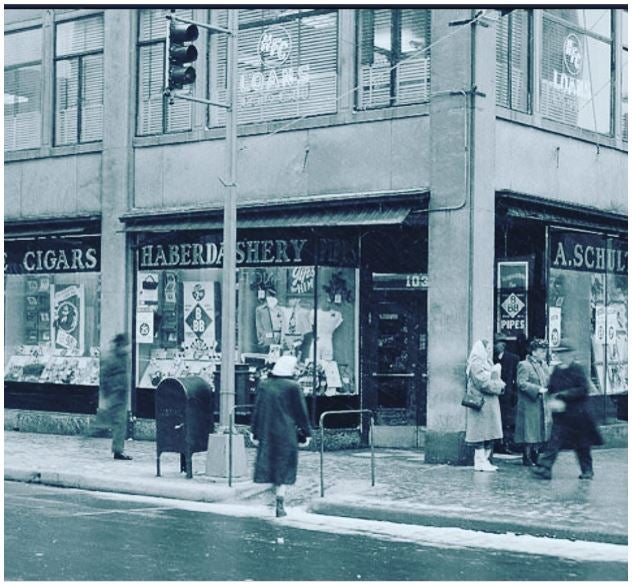The Curb-Cut Effect: From Sidewalks to Source Code
Beth Raduenzel -
9 Feb 2024
Introduction
In the field of design, innovative advancements often emerge from unexpected sources. One such phenomenon that beautifully illustrates this principle is the "Curb-Cut Effect." Originally conceived to address a specific accessibility challenge, the Curb-Cut Effect has become a symbol of the broader benefits of universal design.
For non-designers reading this, Universal Design is defined by The Center for Universal Design at North Carolina State University as: “The design of products and environments to be usable by all people, to the greatest extent possible.”
The Origins
The Universal Design movement originated after World War II, when disabled veterans advocated for public and private spaces to be made accessible to everyone. Before curb-cuts, wheelchair users had to find the nearest driveway, contend with oncoming traffic while crossing, and then look for the next available driveway to exit the street.

Thanks to the veterans’ efforts, the first curb-cuts were implemented in Kalamazoo, Michigan In 1945. Advocacy for improving accessibility continued throughout the 1950s, 1960s, and 1970s, expanding beyond veterans to encompass all Americans with disabilities.
Unfortunately, the Americans with Disabilities Act (ADA) wouldn't be passed into law until 1990, following a pivotal protest event known as the Capitol Crawl, which created an image that legislators couldn't ignore.

The first curb cuts in Kalamazoo had handrails.
Unexpected Benefits
Beyond aiding the intended demographic, curb-cuts proved helpful to a wide range of people, including parents with strollers, bike riders, and delivery workers. A simple design intended for a specific group of users ended up benefiting many others.
Digital Crossover
The Curb-Cut Effect applies to more than just concrete infrastructures. Its principles extend into various aspects of design and technology. Similar to the ADA standards that dictate how ramps are to be designed and constructed, the Web Content Accessibility Guidelines (WCAG) were created to standardize digital accessibility, covering websites, apps, mobile devices, smartwatches, ATMs, kiosks, and more. While many web accessibility guidelines exist, WCAG is the most universally recognized.
The Domino Effect
The profound impact of accessibility features like speech recognition, keyboard shortcuts, and closed captioning extends far beyond their initial purposes. Take, for instance, closed captioning: beyond its foundational purpose, closed captioning is beneficial to language learners, individuals navigating noisy environments, and people watching a video in a quiet place such as a library.
Speech recognition, initially designed as an accessibility feature for individuals with mobility impairments, also provides valuable benefits for those without disabilities. This includes students who struggle with typing but need to write papers and men with large hands who find texting challenging.

Many of today’s most popular products, like Alexa and Siri, have their roots in accessibility. If you are watching a movie on Apple TV and miss a piece of dialog, say “what did he say?” and Apple TV will rewind 15 seconds and show the captions.
The Business Case
Embracing the Curb-Cut Effect isn't just a social responsibility—it's also good for business. Companies that prioritize inclusive design have products and services that appeal to a broader market, such as Apple, Netflix, Microsoft, Lyft, and Amazon. When accessibility is a fundamental consideration, products are more user-friendly for everyone. Good accessibility makes for good user experiences (UX), and good UX makes for happy users!
Challenges and Continuous Improvement
While the Curb-Cut Effect highlights the positive outcomes of universal design, it's crucial to acknowledge the challenges. In some cases, efforts to create an accessible product may fall short, requiring ongoing evaluation and improvement. However, the concept serves as a reminder that designing with accessibility in mind can lead to unexpected and far-reaching benefits.
Conclusion
The Curb-Cut Effect perfectly illustrates how prioritizing inclusivity in design is not only a moral obligation but also a strategic advantage. By considering the diverse needs of all users, we create solutions that improve the lives of many. As we navigate the complexities of a rapidly evolving world, the lessons of the Curb-Cut Effect encourage us to think beyond the obvious and design with a broader, more inclusive perspective.

Beth Raduenzel
Working for large Fortune 100 and 500 companies and small tech startups has given Beth a range of rarely attained experience. Beth has enjoyed improving user experiences across B2B, B2C, and SaaS Enterprise apps, whether as part of a large design team or wearing many hats as the sole designer, researcher, and editor at small startups.
Beth is the author of two published articles on web accessibility and is currently working on a tactile children’s book for the blind.



Share on social media